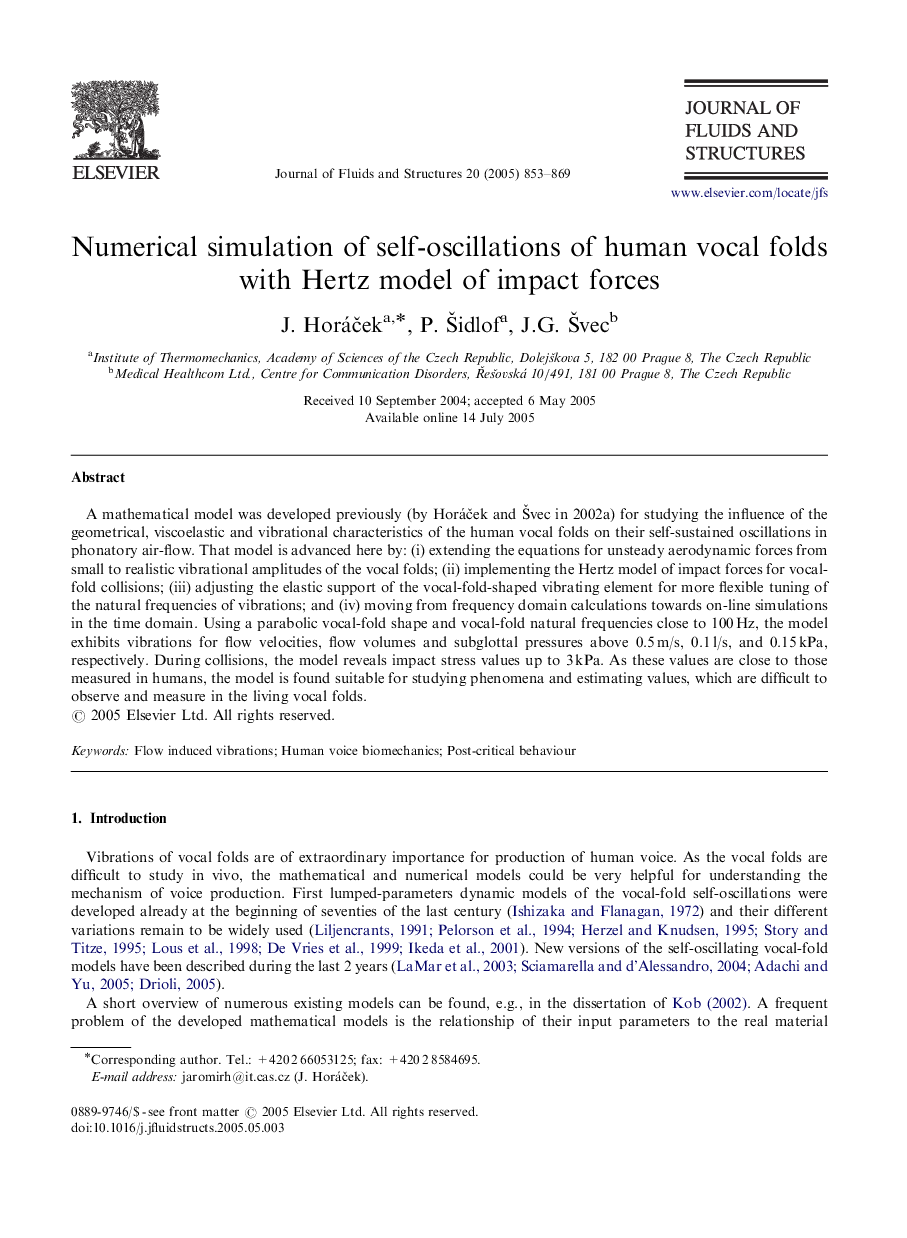| Article ID | Journal | Published Year | Pages | File Type |
|---|---|---|---|---|
| 10417744 | Journal of Fluids and Structures | 2005 | 17 Pages |
Abstract
A mathematical model was developed previously (by HoráÄek and Å vec in 2002a) for studying the influence of the geometrical, viscoelastic and vibrational characteristics of the human vocal folds on their self-sustained oscillations in phonatory air-flow. That model is advanced here by: (i) extending the equations for unsteady aerodynamic forces from small to realistic vibrational amplitudes of the vocal folds; (ii) implementing the Hertz model of impact forces for vocal-fold collisions; (iii) adjusting the elastic support of the vocal-fold-shaped vibrating element for more flexible tuning of the natural frequencies of vibrations; and (iv) moving from frequency domain calculations towards on-line simulations in the time domain. Using a parabolic vocal-fold shape and vocal-fold natural frequencies close to 100 Hz, the model exhibits vibrations for flow velocities, flow volumes and subglottal pressures above 0.5 m/s, 0.1 l/s, and 0.15 kPa, respectively. During collisions, the model reveals impact stress values up to 3 kPa. As these values are close to those measured in humans, the model is found suitable for studying phenomena and estimating values, which are difficult to observe and measure in the living vocal folds.
Keywords
Related Topics
Physical Sciences and Engineering
Engineering
Mechanical Engineering
Authors
J. HoráÄek, P. Å idlof, J.G. Å vec,
